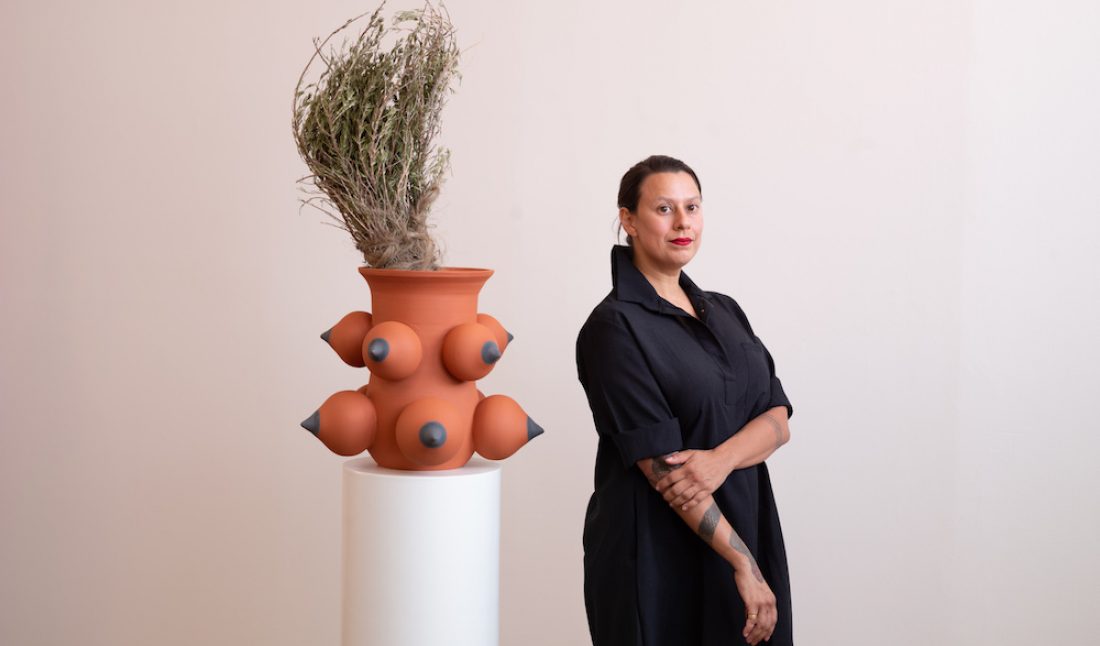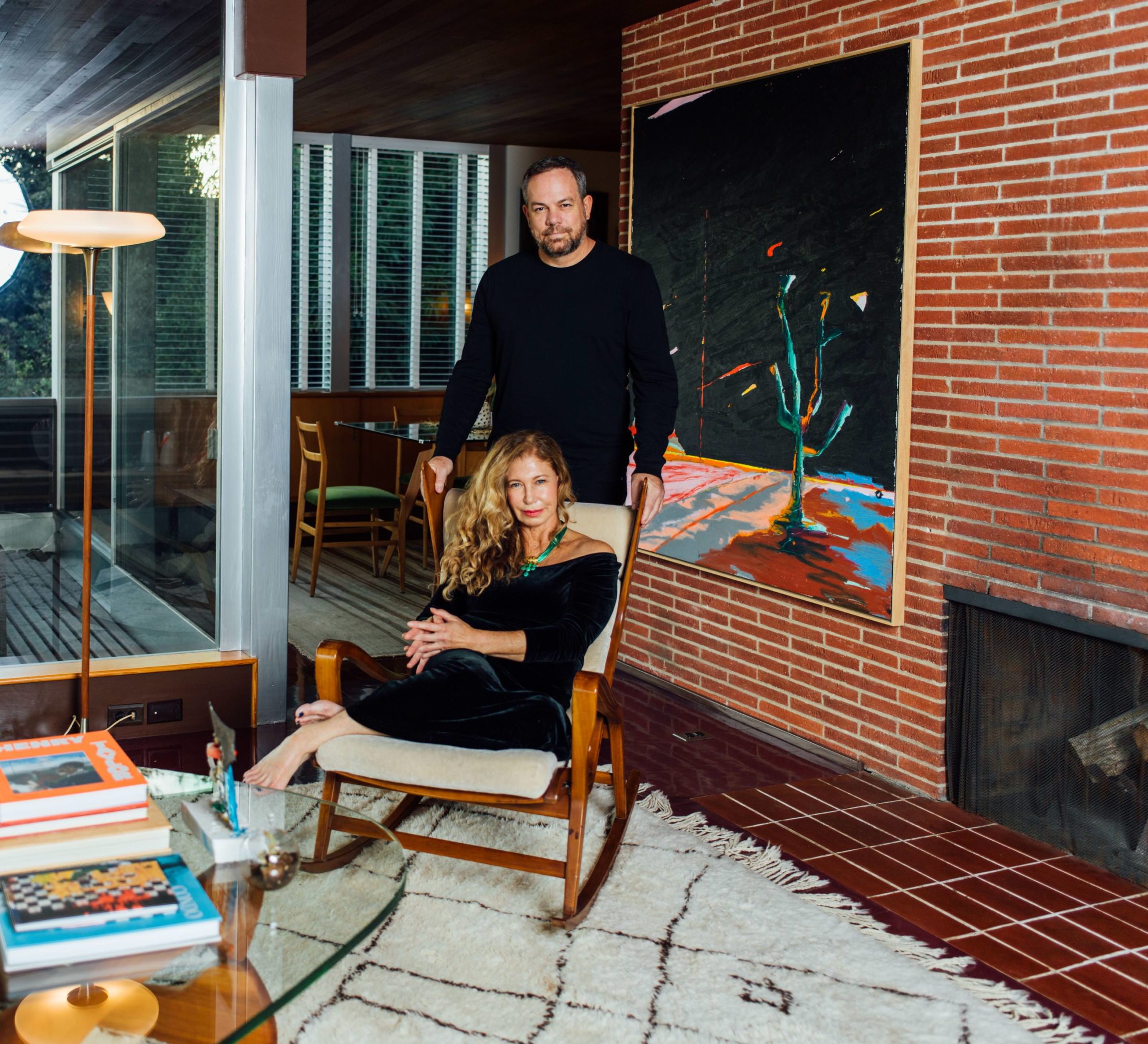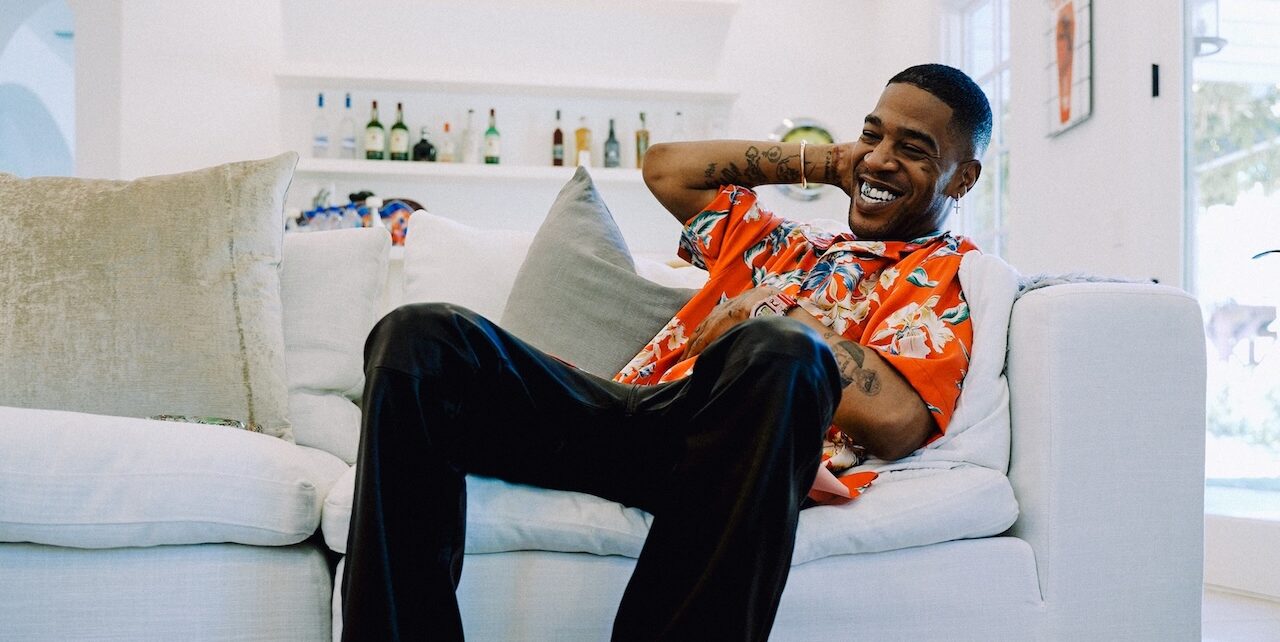Carolina Caycedo’s “In Yarrow We Trust” was on view at Commonwealth and Council in Los Angeles this spring. The solo exhibition featured terra-cotta “Mammiforms,” portraits of healing herbs, hanging sculptures made from fishing nets, and collages of financial symbols and language. The works continued Caycedo’s investigation of our relationship to care—in relationship to motherhood, our communities, our environment, our bodies, and support systems.
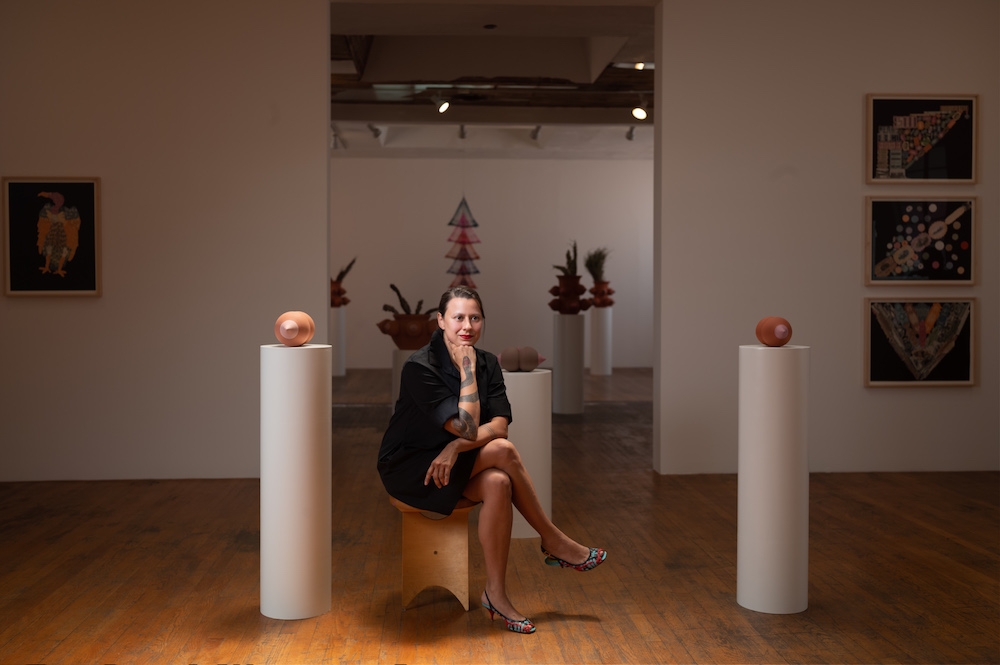 Portrait of Carolina Caycedo at Commonwealth and Council, photo by Mike Allen.
Portrait of Carolina Caycedo at Commonwealth and Council, photo by Mike Allen.
The London-born Colombian artist, currently living and working in L.A., has described her art as the method through which she exerts her citizenship. She is an active participant in movements of solidarity economies, housing as a human right, and territorial resistance. Her current exhibition at the MCA Chicago, “From the Bottom of the River,” addresses communities on the front lines of social and environmental justice, showcasing how large-scale infrastructure projects can be detrimental not just at an ecological level, but a human one.
Whitewall spoke with Caycedo, whose “The Blessings of the Mystery” with filmmaker David de Rozas opens at the Visual Arts Center, University of Texas at Austin, in September.
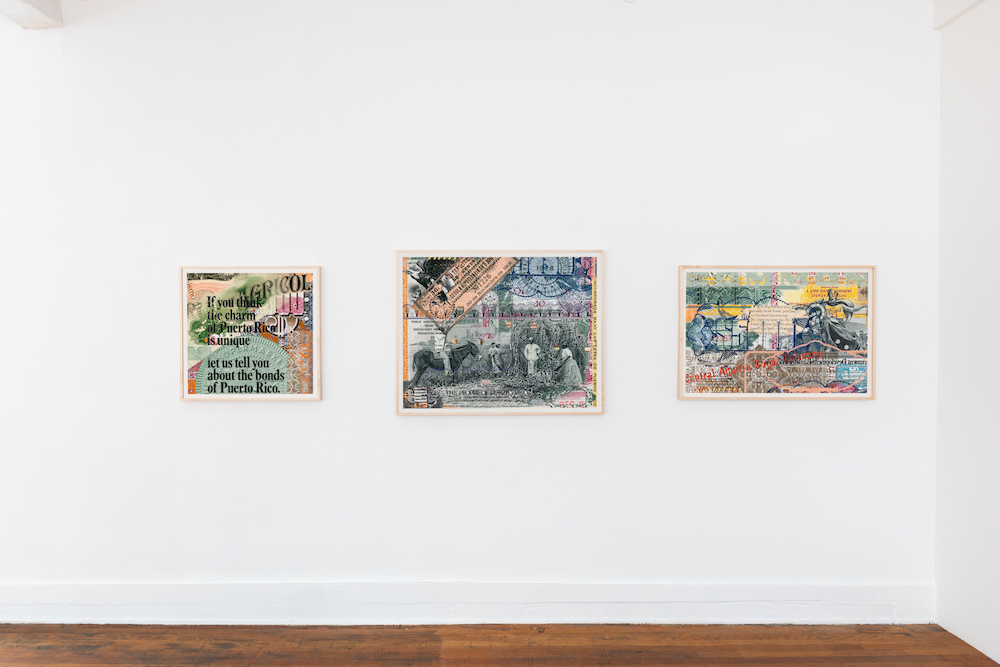 Installation view of Carolina Caycedo’s “In Yarrow We Trust,” 2021 at Commonwealth and Council, Los Angeles, photo by Ruben Diaz.
Installation view of Carolina Caycedo’s “In Yarrow We Trust,” 2021 at Commonwealth and Council, Los Angeles, photo by Ruben Diaz.
WHITEWALL: How did you arrive at the focus of “In Yarrow We Trust”?
CAROLINA CAYCEDO: It’s a mural I made for the Oxy Arts show. A lot of my work overlaps. The Oxy Arts show was looking at female, feminine, femme action in the public sphere, and perhaps the show at Commonwealth is more introspective, talking about my personal sphere through motherhood and care.
For Oxy Arts I did the plant portrait of the yarrow, and it took shape as a mural, but I had done a drawing, so I decided to do a few more and expand that series of plant portraits. They had to do with the ceramics that I also show, the “Mammiforms,” that are a reference to nursing and breastfeeding—that power to nurture we have as persons who can give milk and give birth. And these are plants that I consumed during pregnancy, birth, and while nursing. They all have to do with reproductive health or tonics; they increase milk production.
I gave birth to my second child in September. I’m still nursing, it’s very personal and very introspective, but still acknowledging the power we have to nurture, the power of plants that nurture us, sustain us, that reciprocity.
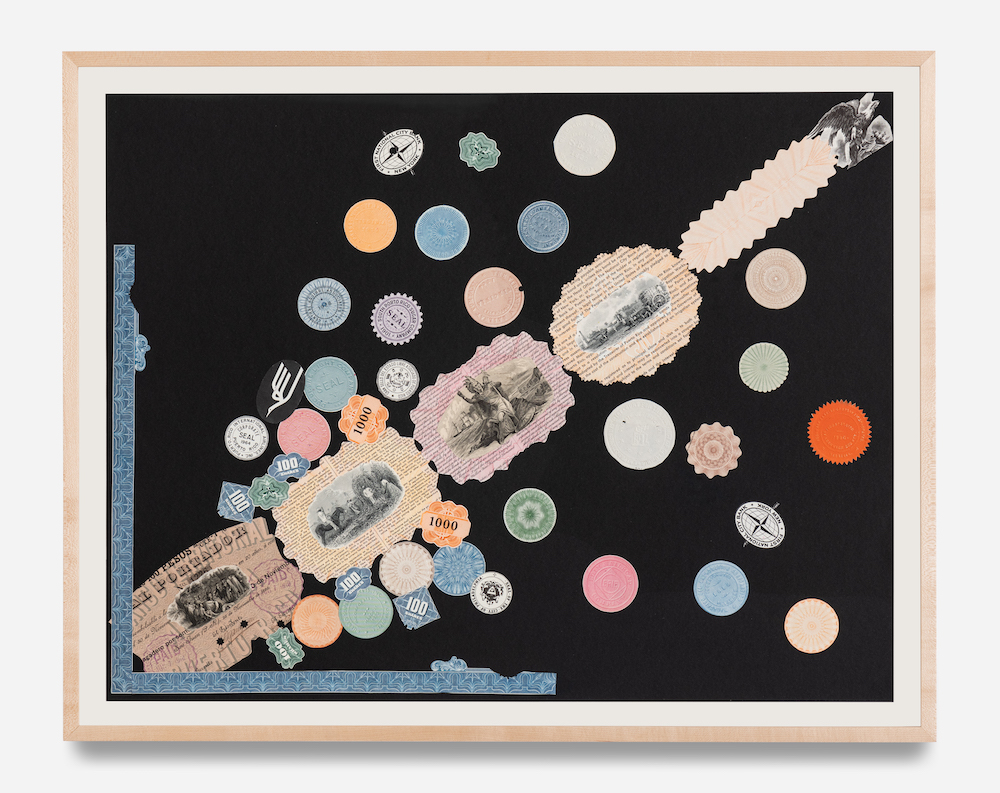 Carolina Caycedo, “Debt Overhang,” 2021, original utility, railroad, private company, and city bonds on paper, frame, 19.25 x 25 inches, courtesy of the artist and Commonwealth and Council, Los Angeles.
Carolina Caycedo, “Debt Overhang,” 2021, original utility, railroad, private company, and city bonds on paper, frame, 19.25 x 25 inches, courtesy of the artist and Commonwealth and Council, Los Angeles.
WW: I just finished nursing my two-year-old, so the “Mammiform” pieces really resonated with me!
CC: I know, I know. It’s beautiful though, no?
WW: Yes. What was it like making those?
CC: They are inspired in pre-Columbian vessels that I encountered during a museum visit in the south of Colombia seven or eight years ago. As I was preparing this show, experiencing what it means to be a mother again, this image came into my mind, and I decided I wanted to interpret it and replicate it. I worked with a master ceramicist, whose name is Juan R. Aguilera. He is master clay and glaze technician at Laguna Clay. He helped me develop these pieces and create these “Mammiforms.”
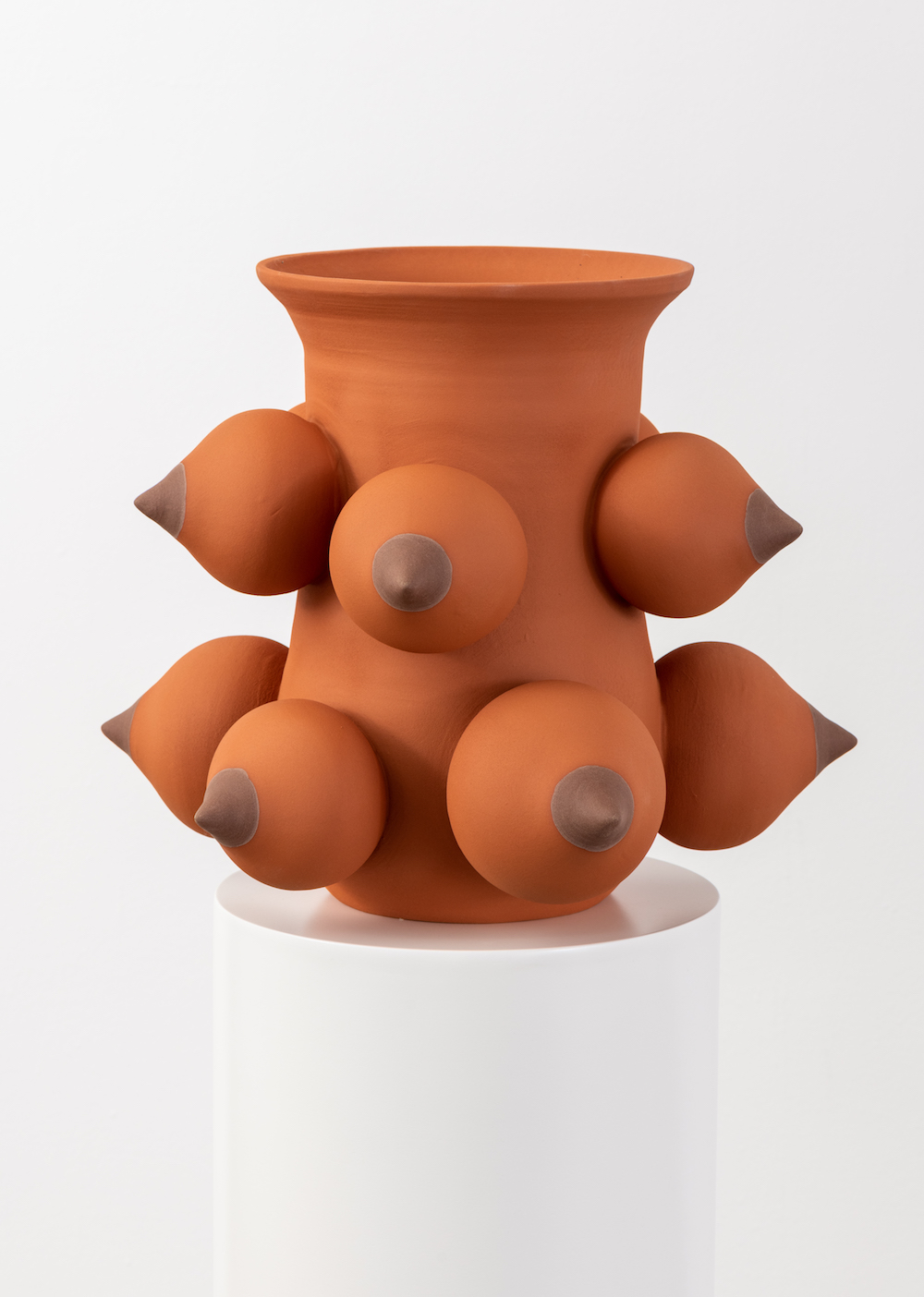 Carolina Caycedo, “Mammiform Brown,” 2021, fired earthenware with terracotta coat, underglaze, birch plywood pedestal, alkyd paint, 14.75 x 18 x 18 in. Courtesy to the artist and Commonwealth and Council, Los Angeles.
Carolina Caycedo, “Mammiform Brown,” 2021, fired earthenware with terracotta coat, underglaze, birch plywood pedestal, alkyd paint, 14.75 x 18 x 18 in. Courtesy to the artist and Commonwealth and Council, Los Angeles.
WW: Along that theme of the more personal pieces is Good Night Spell, a hanging sculpture made of fishing nets that is almost like a mobile.
CC: I’ve worked with artisanal fishing nets for a while, part of a long series called “Cosmotarrayas.” I had done one a couple of years ago as a commission for a private house in the porch area. It took a similar shape to Good Night Spell, where I did an armature structure that made this cone shape of the net, and there was one net inside the other. It moved in such a beautiful way through the wind. That stuck with me, and I wanted to keep exploring that possibility, which is more formal and playful. I played with some colors that could produce the moiré effect when you put them together.
We’ve been working from home during the pandemic, when I was building them in my living room—my son was just so enchanted about it. He kept trying to reach for them. It has to do with the protection you want for your babies and also that they allow for a good sleep. They sleep well, so you do. It’s a commemoration, but it’s also like a plea, right?
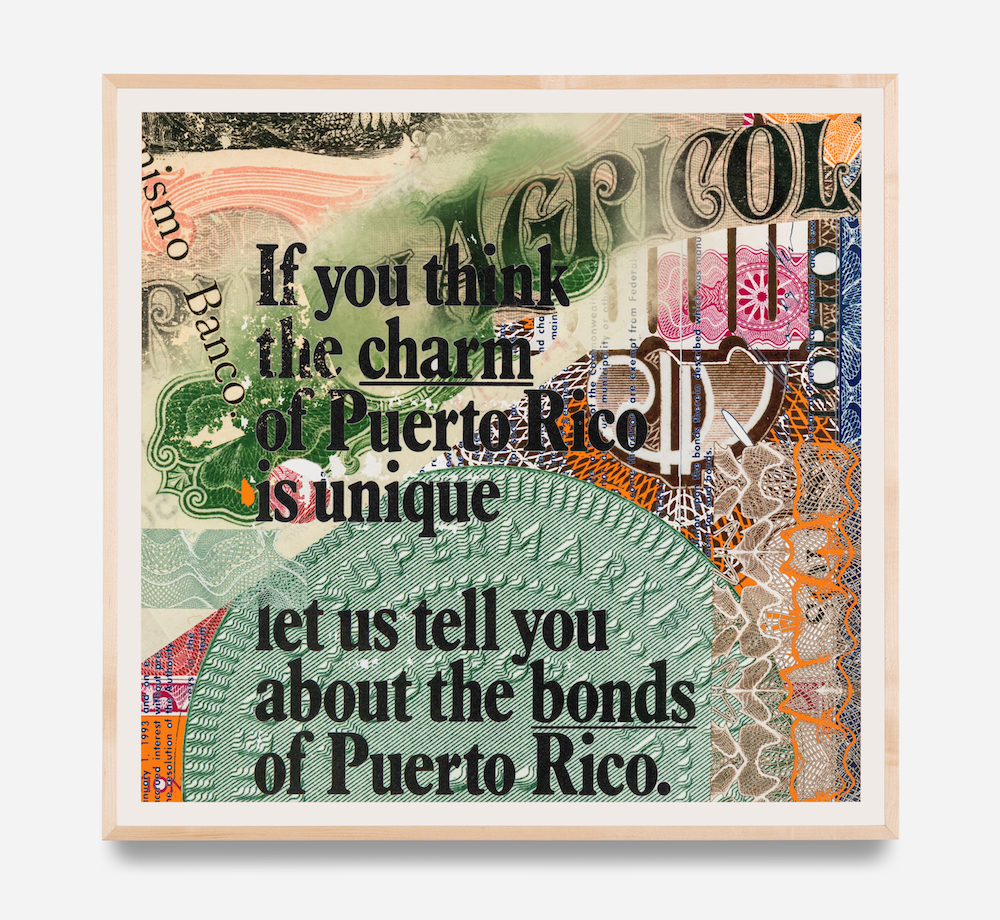 Carolina Caycedo, “Charm Bonds,” 2021, inkjet print on Epson Hot Press, framed: 26.5 x 27.5 x 1.5 inches, courtesy of the artist and Commonwealth and Council, Los Angeles.
Carolina Caycedo, “Charm Bonds,” 2021, inkjet print on Epson Hot Press, framed: 26.5 x 27.5 x 1.5 inches, courtesy of the artist and Commonwealth and Council, Los Angeles.
WW: Also on view are a number of collages you created from stocks and bonds certificates. How did you arrive at that source material, and what are you exploring in these pieces?
CC: The collage series is called “Distressed Debt,” and it’s looking at bonds, municipal government and corporate bonds, historical ones, issued
since late 1800s all the way to the 1970s. They range from slave bonds, where enslaved people were used as collateral to mortgage, to raise funds. That’s where the bond as we know it today comes from. Slave bondage.
The series explores that aesthetic of debt and this language and highlights the injustice of how bonds as a financial figure as we know today has its origins in slavery. The term’s also difficult to grasp for someone who doesn’t have that financial knowledge. I feel like you inherit that; it has to do with intergenerational wealth. They have super bright colors; they have this intricate seals, and frames, very similar to see what we see in note bills or paper currencies. And they have this language that is very tricky, that is a language that in care economies we use like “trust,” “bond”—this language that you never think it refers to this more financial, tyrannical almost, world.
These aesthetics are a visual representation of how intricate this world is and how capital finds loopholes and is very slippery in terms of how it moves, slip through the holes so they aren’t held accountable.
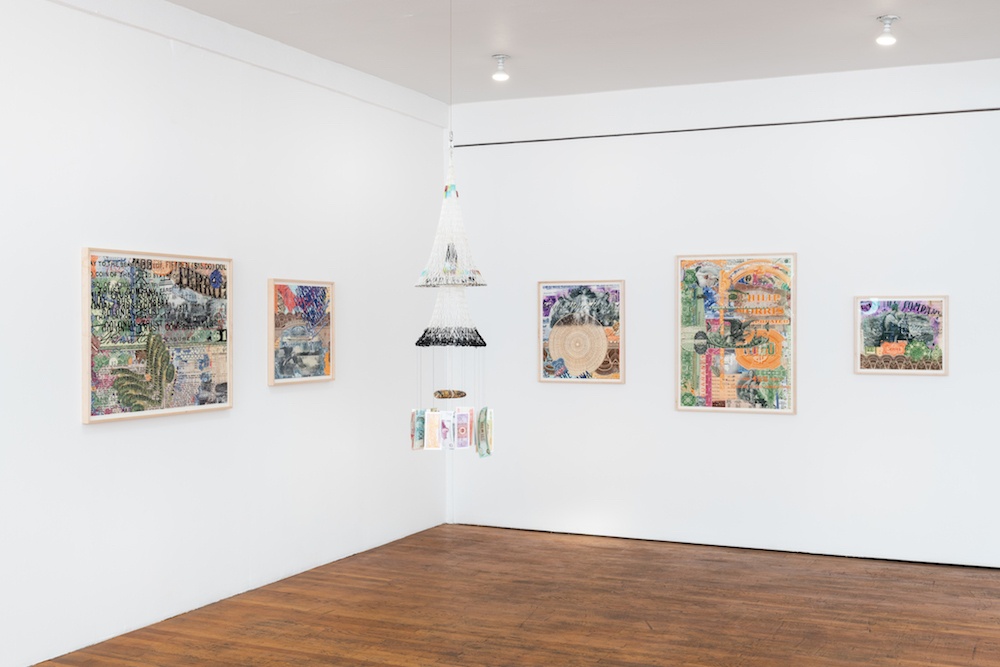 Installation view of Carolina Caycedo’s “In Yarrow We Trust,” 2021 at Commonwealth and Council, Los Angeles, photo by Ruben Diaz.
Installation view of Carolina Caycedo’s “In Yarrow We Trust,” 2021 at Commonwealth and Council, Los Angeles, photo by Ruben Diaz.
WW: How do you think the conversation around care has evolved given the past year?
CC: One of the goals of the exhibitions at Oxy Arts was to place that labor of care at the core of other kinds of struggles, labors, and care for the environment itself. If you have a woman who puts herself on the front line of environmental justice, it’s because she cares about that place, that river, that mountain, that forest, whatever she’s defending. She cares about life itself. And the same for women who put themselves on the front line of abortion struggles, right? They don’t do it for anything other than because they care— they care for other women’s bodies, too. Care is at the base of a lot of direct action, all sorts of social justice struggles, including environmental struggles. It’s incredible because after we opened the show, the Biden administration started making public their infrastructure plans and they started mentioning the infrastructure of care, something very important. The fact that it’s reached the mainstream is very pleasing.
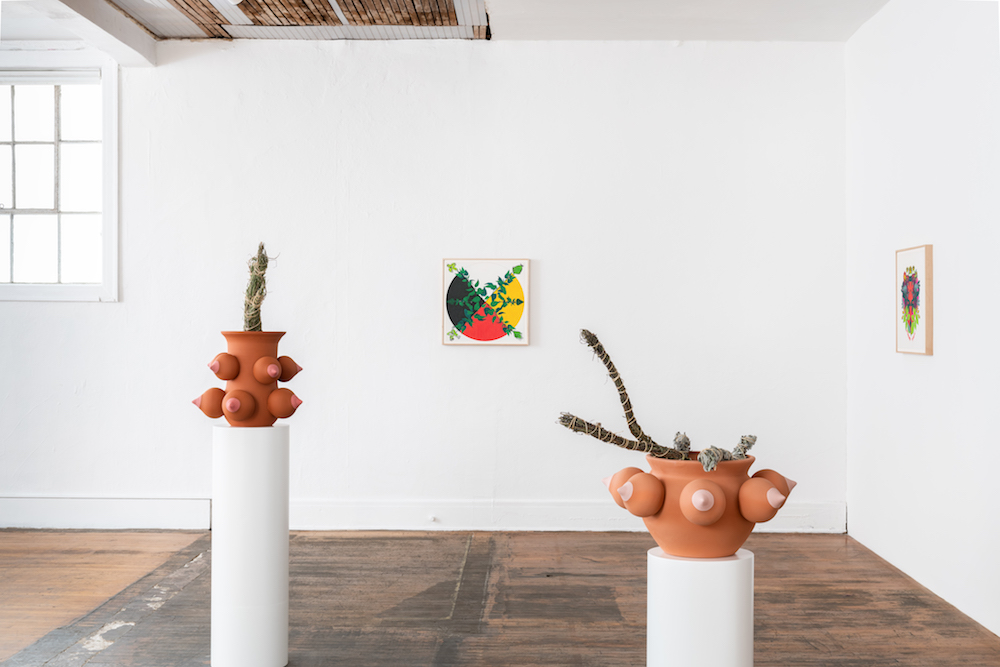 Installation view of Carolina Caycedo’s “In Yarrow We Trust,” 2021 at Commonwealth and Council, Los Angeles, photo by Ruben Diaz.
Installation view of Carolina Caycedo’s “In Yarrow We Trust,” 2021 at Commonwealth and Council, Los Angeles, photo by Ruben Diaz.
Eurocentric conservational and environmental structures have always erased the profound relationship humans have with the land. It’s very strategic. The people who have always kept that relationship alive, in action and not in theory, are indigenous people. So to suddenly say, well, actually, indigenous people are the best environmentalists in the world, that means that they need their land back, it’s not an easy conversation for many. I think that’s one of the reasons why that more human relationship is not at the core of Eurocentric environmentalism.
The work I put out into the public is to make the audience question and rethink their relationship with nature. We’re not above, we’re not outside nature, we’re in this planet, standing, rooted in a place which is your place. What’s your relationship to that place? What are the things in that place that sustain you, feed you, nourish you, and what can you give back? How can we be reciprocal with what sustains us?
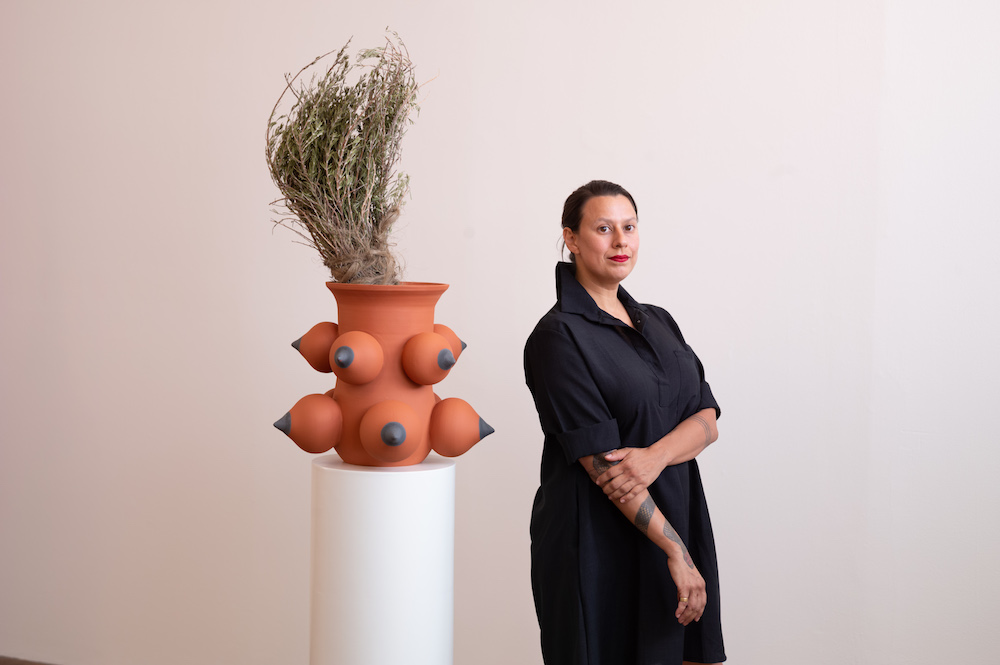 Portrait of Carolina Caycedo at Commonwealth and Council, photo by Mike Allen.
Portrait of Carolina Caycedo at Commonwealth and Council, photo by Mike Allen.






